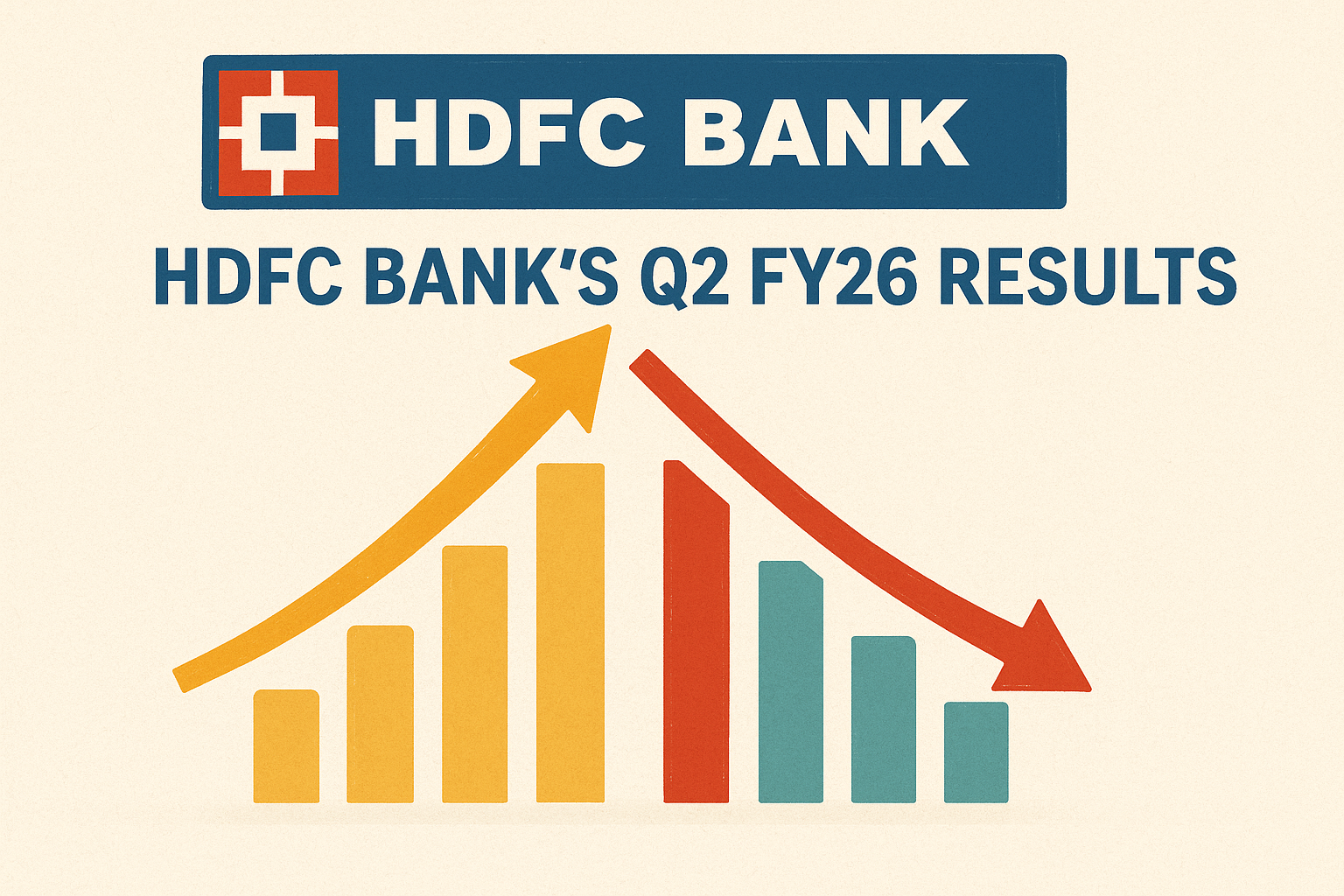India’s largest private sector lender, HDFC Bank, announced its quarterly results for the period ended September 30, 2025 (Q2 FY26), showing a resilient performance amid a challenging interest-rate environment. The bank delivered a strong profit beat driven by steady loan growth and improved asset quality, even as margins remained under pressure.
Profit Growth Outpaces Expectations
HDFC Bank reported a standalone net profit of ₹18,640 crore, marking an impressive 10.8% year-on-year rise. This figure not only underscores the bank’s robust earnings momentum but also exceeded market expectations, which were pegged around ₹17,700 crore.
The earnings surprise was largely powered by higher non-interest income and lower provisions. Despite a modest uptick in net interest income, the bank’s diversified income streams cushioned the impact of narrowing margins.
Margins Under Strain
The net interest margin (NIM), a key profitability metric, fell slightly to 3.27% from 3.35% in the same period last year. This decline reflects the rising cost of funds amid an increasingly competitive deposit market. As banks across the sector offer higher deposit rates to attract liquidity, HDFC Bank’s interest expenses have grown faster than its yield on loans.
However, management maintained that margins are expected to stabilize in the coming quarters as deposit repricing catches up and lending growth remains healthy.
Strong Loan and Deposit Growth
On the business front, the bank’s loan book grew nearly 10% year-on-year, led by robust demand in retail, SME, and mid-corporate segments. At the same time, deposits increased by around 12%, highlighting continued confidence among savers and investors.
This balanced growth between assets and liabilities signals a stable funding structure—an essential factor in sustaining the bank’s long-term profitability.
Asset Quality Strengthens
A particularly encouraging highlight from the results was the improvement in asset quality. The Gross Non-Performing Assets (GNPA) ratio declined to 1.24% from 1.40% last year, while the Net NPA also fell modestly. This improvement reflects better credit discipline, stronger recoveries, and lower slippages across key portfolios.
For a bank of HDFC’s scale, maintaining asset quality amid rapid growth is a significant achievement, and it reinforces investor confidence in the bank’s risk management framework.
Boost from Non-Interest Income
Another bright spot came from the non-interest income segment, particularly from trading and mark-to-market (MTM) gains, which surged to approximately ₹2,390 crore compared to ₹290 crore a year ago. This jump provided a meaningful boost to the overall profit line.
While such income can be volatile, it helped offset some of the margin compression during the quarter. The bank’s fee and commission income from retail products, payments, and digital banking also remained healthy, showcasing its diversified revenue mix.
Key Challenges Ahead
Despite the solid numbers, HDFC Bank faces certain challenges:
- Margin pressure remains the biggest concern. With deposit rates climbing, sustaining profitability will depend on the pace of loan repricing.
- Volatility in trading income means the bank cannot rely on such gains consistently.
- Competition in retail and SME lending is intensifying, with other large banks aggressively expanding in the same segments.
- Macroeconomic uncertainties such as inflation, potential rate changes, and global economic slowdown could influence funding costs and loan demand.
The Broader Picture
From an investor’s standpoint, these results paint a picture of steady growth with selective caution. The bank’s strong deposit franchise, disciplined risk management, and operational efficiency continue to set it apart.
While the margin compression tempers near-term excitement, the underlying fundamentals remain intact, suggesting that HDFC Bank is well-positioned to maintain double-digit profit growth as the operating environment stabilizes.
Takeaways
HDFC Bank’s Q2 FY26 results reaffirm its standing as India’s most consistent banking performer. The profit beat, healthy loan growth, and improving asset quality are clear positives. However, the management’s ability to revive margins and sustain core income growth will determine the next phase of performance.
For long-term investors, the current phase looks like a period of consolidation rather than correction—a time when strong fundamentals quietly prepare the ground for the next growth cycle.
Feel free to share your experiences and insights in the comments below. Let’s continue the conversation and grow together as a community of traders and analysts.
By sharing this experience and insights, I hope to contribute to the collective knowledge of our professional community, encouraging a culture of strategic thinking and informed decision-making.
As always, thorough research and risk management are crucial. The dynamic nature of financial markets demands vigilance, agility, and a deep understanding of the tools at your disposal. Here’s to profitable trading and navigating the election season with confidence!
Ready to stay ahead of market trends and make informed investment decisions? Follow our page for more insights and updates on the latest in the financial world!
For a free online stock market training by Yogeshwar Vashishtha (M.Tech IIT) this Saturday from 11 am – 1 pm, please sign up with https://pathfinderstrainings.in/training/freetrainings.aspx
Experience profits with my winning algo strategies – get a free one-month trial with ₹15 lakh capital! – https://terminal.algofinders.com/algo-terminal
Disclaimer
This article should not be interpreted as investment advice. For any investment decisions, consult a reputable financial advisor. The author and publisher are not responsible for any losses incurred by investors or traders based on the information provided.


